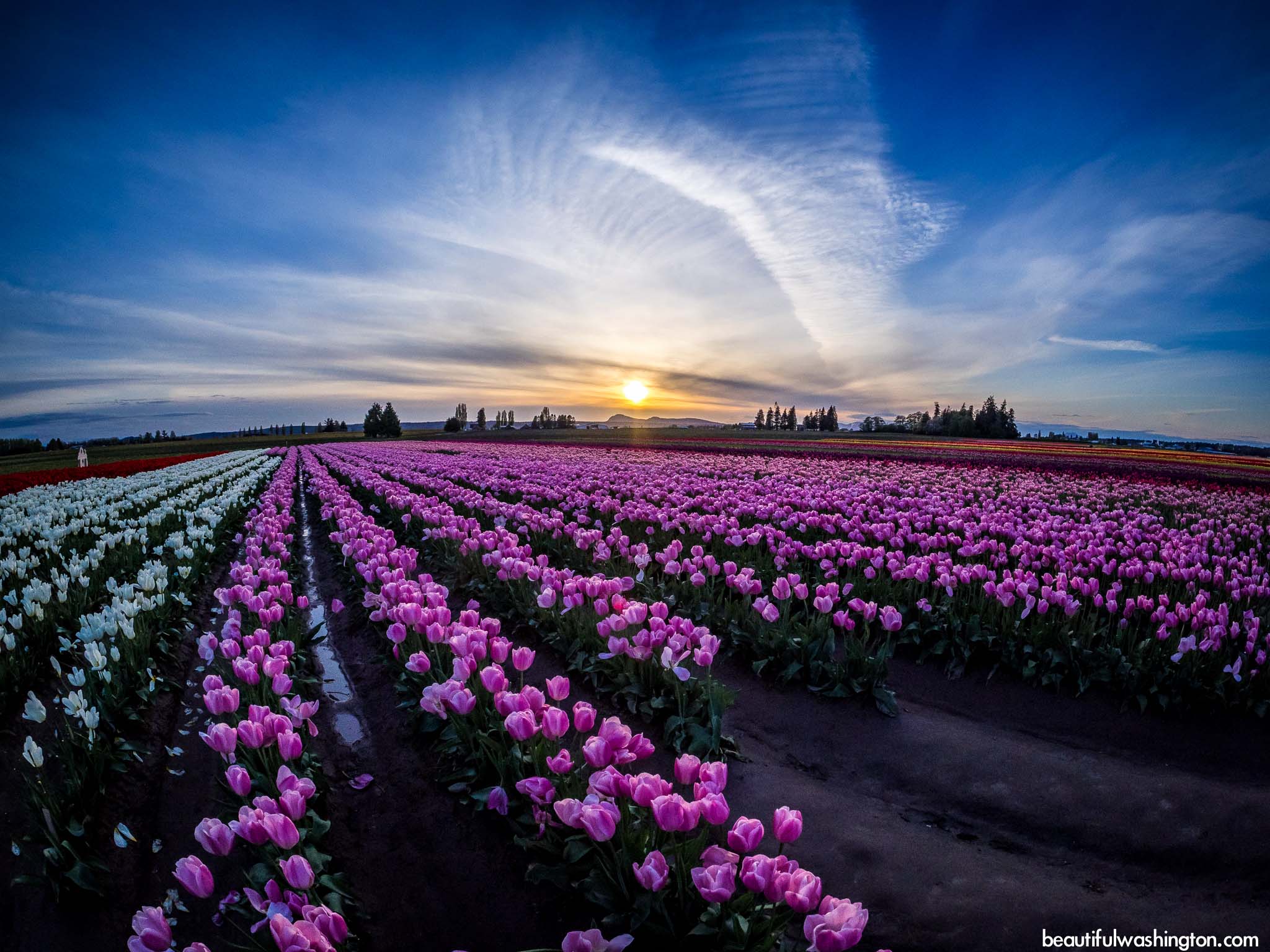Quote of the Month:
“Nature gives to every time and season some beauties of its own." - Charles Dickens
“Nature gives to every time and season some beauties of its own." - Charles Dickens
Population: 118,837
Area: 1,920 square miles
County Seat: Mount Vernon
Skagit County, a county in Washington State, has a total area of 1,920 square miles. The county is well-known for its fertile and huge valley of the Skagit County, which is a center for tulips and strawberry growing.
The county seat is its largest city Mount Vernon. Its’ name the county received from the Skagit Indian tribe that has lived on the territory of nowadays Skagit County since long before white settlement.
The Skagit County was formed out of Whatcom County in 1883. Nowadays the county continues to be a rural area. As well as logging and light industries play an important role in the economy of the county.
Skagit County today is one of the major producers of cabbage, spinach and table beet in the world.
Skagit County both today and many years ago attracted people by its’ wonderful landscape and natural resources. Historians claim that first people on the territory of present Skagit County appeared 10,000 years ago. They were attracted to the Skagit River and other resources. These tribes fished for salmon, collected mussels and clams. In 1850 there were 11 different tribes in Skagit County. White people began to move here in the early 1860s. After building of the first dike on the LaConner flats in 1863, the county bore up for being a strong agricultural center.
Mount Vernon is the largest city and the county seat of Skagit County. The population of the city is 32,600 people. Mount Vernon is known for its annual Tulip Festival Street Fair as a part of a great Skagit Valley Tulip Festival. In 1998, Mount Vernon was rated as the best small city in US.
Skagit Valley Tulip Festival
The Skagit Valley Tulip Festival is the main and the largest floral festival in the state. More than 1 million people come here to enjoy and explore more than 300 acres of colorful flowers annually. April is the month when the festival is held. Experts say that tulips start to bloom in the beginning of April, and the second week of April is the time for the fields to be in full bloom.  The Skagit Valley, to my mind, may be surely called Little Holland, because Skagit tulips grow in similar conditions as Holland tulips: similar soil, latitude and altitude, as well as similar marine influence.
The Skagit Valley, to my mind, may be surely called Little Holland, because Skagit tulips grow in similar conditions as Holland tulips: similar soil, latitude and altitude, as well as similar marine influence.
Tulip Town and RoozenGaarde are the two main farms where thousands of tulips are grown.
The Skagit Valley Tulip Festival attracts millions of tourists and of course traffic jams are usual for this period of time. If you want to avoid the crowds and fully enjoy the beauty of the flowers, we recommend taking a trip to the valley during a weekday. If Saturday of Sunday are the only days you can visit the festival, try to come here before 9 a.m. or after 3 p.m.
Skagit Wildlife Area
The Skagit Wildlife Area consists of 16 separate units with total area of 16,700 acres. The biggest part is adjacent to Skagit Bay, between the mouths of the south and the north forks of the Skagit River. Every year from autumn to spring, this area is home for thousands of birds. Here you will see snow geese, tundra swans, trumpeter, etc. The Skagit Wildlife Area can be accessed from different points. But remember that from October till January is hunting season, so be very careful if you choose to visit this place.
Rasar State Park
Rasar State Park is a 169-acre park that offers wonderful camping opportunities and 4,000 feet of freshwater shoreline. People come here because this park is one of the best places for eagle watching. If you want to observe these wonderful birds, come in early spring or early winter.
Bay View State Park
Bay View State Park is a 25-acre park, perfect for camping. This area features 1,285 feet of saltwater shoreline on Padilla Bay. It should be said that more than 11,000 acres of Padilla Bay are considered National Estuarine Sanctuary.
Information: Marina Petrova
Leave your comment